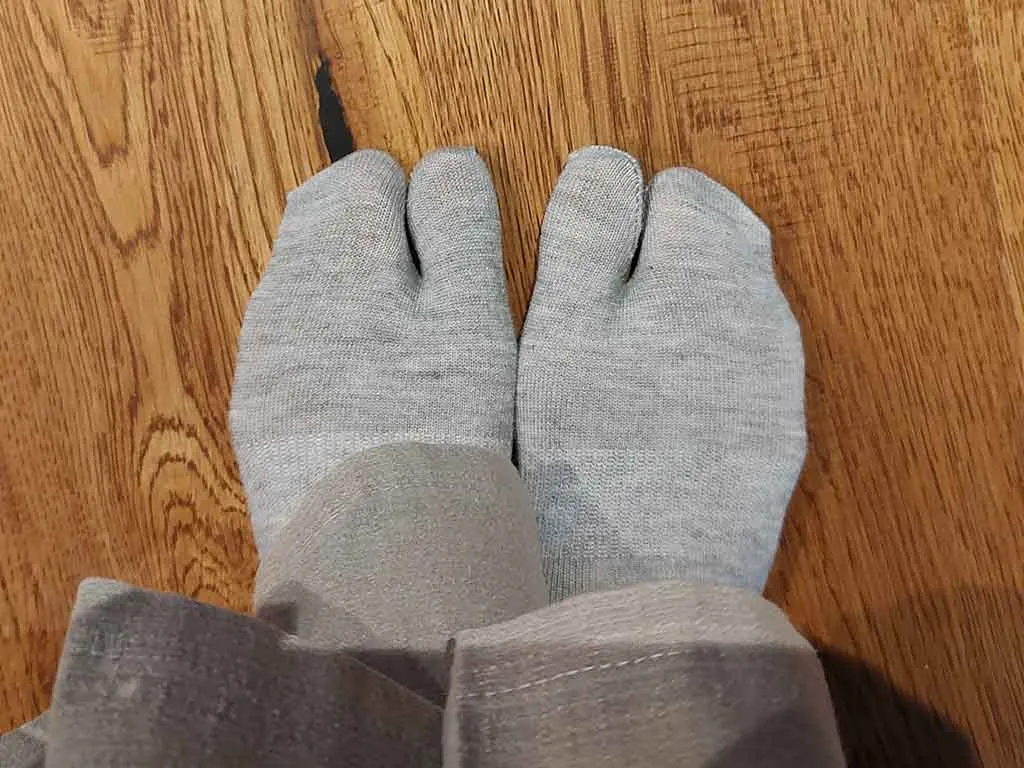What’s the point of tabi socks? Are they good?
What is tabi?
Tabi is traditional Japanese socks designed to fit zori and/or geta, traditional Japanese formal flip flops or sandals that went with kimono. It’s been forgotten for a while as Japanese got obsessed with transitioning to Western-style clothing. Today it’s rather rare for Japanese to be dressed in kimono, tabi and zori/geta except for special occasions such as attending someone’s wedding ceremony or traditional tea ceremony. However, tabi is making a come back recently as socks and/or shoes that go with modern fashion.
Tabi design is split-toe that separates you big toe from the rest, which has some benefits.
Find the right product that fits your needs.
Maison Martin Margiela, a French high fashion brand designed iconic Tabi Boot in 1989. It is usually credited to have brought tabi to modern fashion world.
Kineya Running Tabi
However, you don’t go high fashion usually. How do you leverage tabi in your daily life? One of the opportunities is in running and walking.
Traditional Japanese tabi manufacturer Kineya Tabi was founded in Saitama, Japan in 1928 when almost every Japanese who could afford to shoes (geta or zori) wore tabi, not socks. Ever since, it has been working to make tabi, which became unpopular among young people especially after 1960’s, relevant in ever-changing society. One of recent their endeavors is Kineya running tabi.
Kineya Running Tabi makes a bold statement:
“Running shoes technology rapidly progressed,
which made our feet to regress.”
Kineya Running Tabi is complete different from recent running shoes that are cushiony and bouncy just to break records. It is designed to make running experiences as close to bare foot so that each and every part of our foot can unleash its potential. It also lets your soles to feel what they touch by minimizing the materials that separate them from the surface of the ground.
Basically, what it does is to stop over-protecting and pampering our feet. The Running Tabi warns that it requires some getting used to, as you will have to use the muscles you didn’t have to use when wearing high-tech running shoes.
If you want to remember what it used to be like for humans to run and train every part of your feet, you could experience running tabi.
Jikatabi
One of the reasons why tabi is good for running or walking is because split-toe can get a good grip. That’s the reason why physical workers in Japan traditionally wore tabi shoes. Called jikatabi, they are still worn by Japanese who are involved in construction and other types of work that require a lot of physical activities.
Tabi socks
Keep your feet warm: NODAL socks by Tamai Shoten
Another benefit: tabi keeps your toes warm and dry. Another traditional tabi manufacturer Tamai Shoten founded in 1889 in Osaka markets socks that leverage their long-standing experience making tabi.
Five toe socks
If you have medical problems on your toes, there are split-toe socks that split all five toes. Below is the one offered by Japanese brand MUJI. I saw them recently at its Ginza store in Tokyo, but I am not seeing them online. Check their website as they may be re-stocking.
























